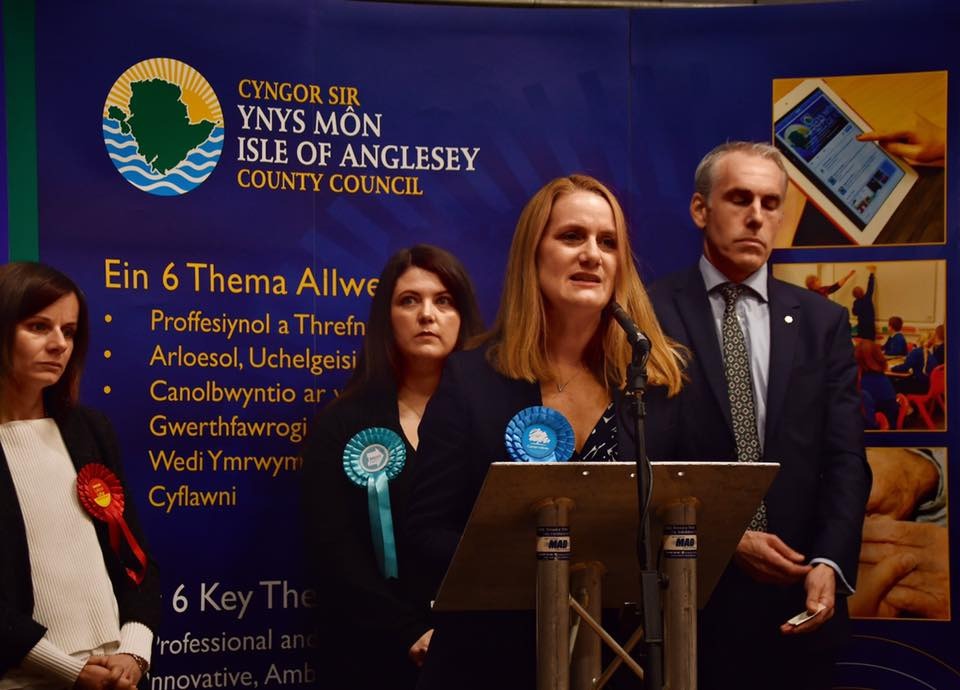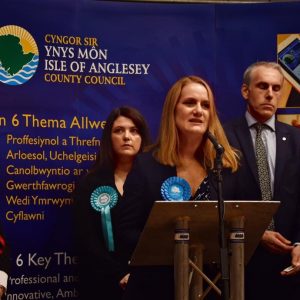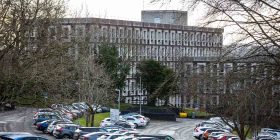What did we learn from Tory win on Ynys Môn?

As a blue wave swept over Britain on election night, one of the biggest perceived shocks was Ynys Môn electing its first Conservative MP in almost 40 years.
Since 1987, Anglesey has always been represented on a national stage by Labour or Plaid Cymru, with the Conservatives not even boasting a single councillor at the Plaid-run county chambers in Llangefni.
But should it have come as any surprise that this Brexit-backing constituency, with a strong agricultural vote, followed the national trend by placing Boris Johnson into office for another four years?
Conservatives have always had strong support
A surge in Conservative support hasn’t come from nowhere, with Môn having been represented by Tory MP Keith Best between 1979 and 1987.
Despite a slump in support in the later years of John Major’s regime and the Labour landslide in 1997, the party’s vote share has been on the rise.
Conservative-turned independent Peter Rogers came second to Plaid’s Ieuan Wyn Jones in two successive Assembly elections, followed by another strong second place showing by Paul Williams in 2011.
While, in the 2017 General Election, Tory candidate Tomos Dafydd Davies had pipped Plaid to third place despite Albert Owen’s 5,000 majority.
National swing played a big part
The victory should be considered a huge one for a simple Conservative Brexit message which resonated on doorsteps.
The huge national swing swept away dozens of “red wall” constituencies -including swathes of north east Wales – many of whom had a much stronger Labour-voting tradition than Ynys Môn.
However, the win will also be looked at as a personal triumph for the chair of Kensington, Chelsea and Fulham Conservatives, Virginia Crosbie, who was only announced as a candidate for Ynys Môn at the 11th hour.
Chris Davies, the former Brecon and Rednorshire MP, had pulled out when other Welsh Tories criticised his selection, leaving the new candidate having to play catch-up due to her opponents having a head start of several weeks.
Following her win, she said: “The message has been very clear.
“It’s all about delivering Brexit by the end of January so that we can focus on getting jobs, skilled employment, and much needed investment in the area.
“People were very frustrated they had not been listened to. This Election was all about them voting for the Conservatives that are going to deliver Brexit.”
Brexit (and Corbyn) also cost other parties support
Both Labour and Plaid Cymru reported a failure to convince some long-standing party supporters who backed Brexit.
While Plaid Cymru’s vote remained relatively stagnant , rising by just 1%, Labour’s fell by almost 12%.
Most pro-remain tactical voting websites had been suggesting a vote for Labour which may have hampered some Plaid momentum.
But despite Labour managing to retain a large percentage of their 2017 share – even after losing Albert Owen’s personal vote after 18 years at Westminster – party campaigners said that both Corbyn and Brexit were often brought up negatively on the doorstep.
One Labour activist said that middle-aged and older voters were particularly swayed in their eagerness to see Brexit realised, although younger voters were more fearful of leaving the European Union.
A Plaid source also felt that some Brexit-supporting Plaid Cymru stalwarts had also “lent” their votes to a pro-Brexit party on this occasion.
Split votes cost the left/remain parties
It was known well before polling day that Ynys Môn was a three-way marginal with three parties ending up with roughly a third of the vote.
The Conservative share on Môn of 35.5% was similar to that achieved in other rural seats such as Carmarthen East and Dinefwr (34.5%) and Dwyfor Meirionnydd (32.4%), which they failed to win.
The difference there being that the ‘remain’ vote coalesced for one party and was not evenly split down the middle between Plaid Cymru & Labour.
Both Plaid Cymru and Labour claimed, at certain points, that only they could beat the Conservatives by pointing to different methodology.
So what next?
The Conservatives’ landslide win means that Parliament will almost certainly vote on Boris Johnson’s withdrawal agreement by Christmas, and for the UK to leave the EU by the end of January.
The Government has already promised to create up to 10 free ports across the UK after Brexit – allowing firms to import goods and then re-export them outside normal tax and customs rules.
Mrs Crosbie, in a pre-election pledge, promised to campaign for Holyhead to be given such status which she said would “put Holyhead on the international map” as well as “unleash hundreds of new, good quality jobs” and boost tourism.
But the contradiction of the island voting for a right of centre party at Westminster but maintaining a left of centre, Welsh nationalist representative at Cardiff Bay, will be of great interest over the coming years.
By Gareth Williams – Local Democracy Reporter
Spotted something? Got a story? Send a Facebook Message | A direct message on Twitter | Email news@north.wales






